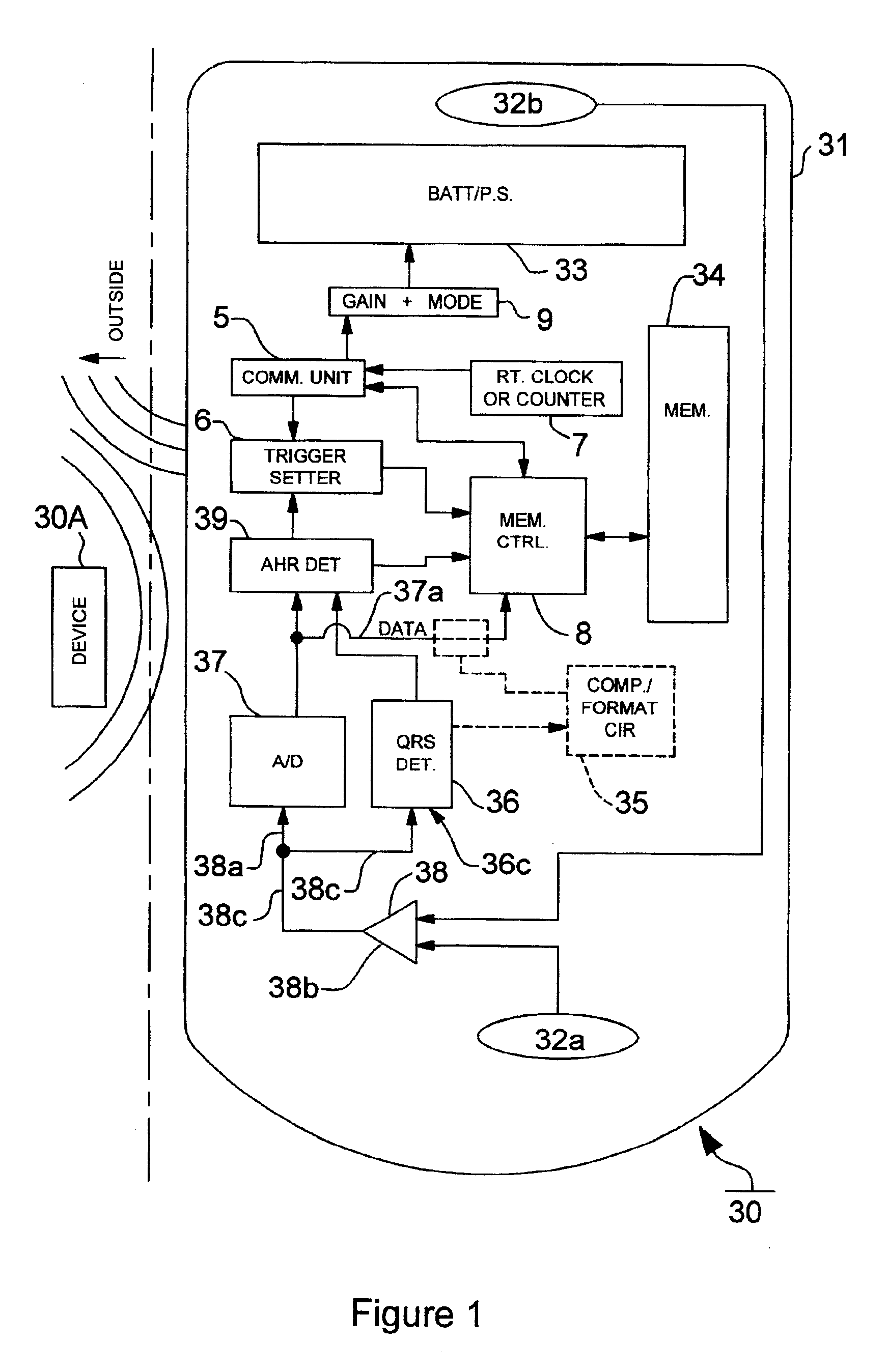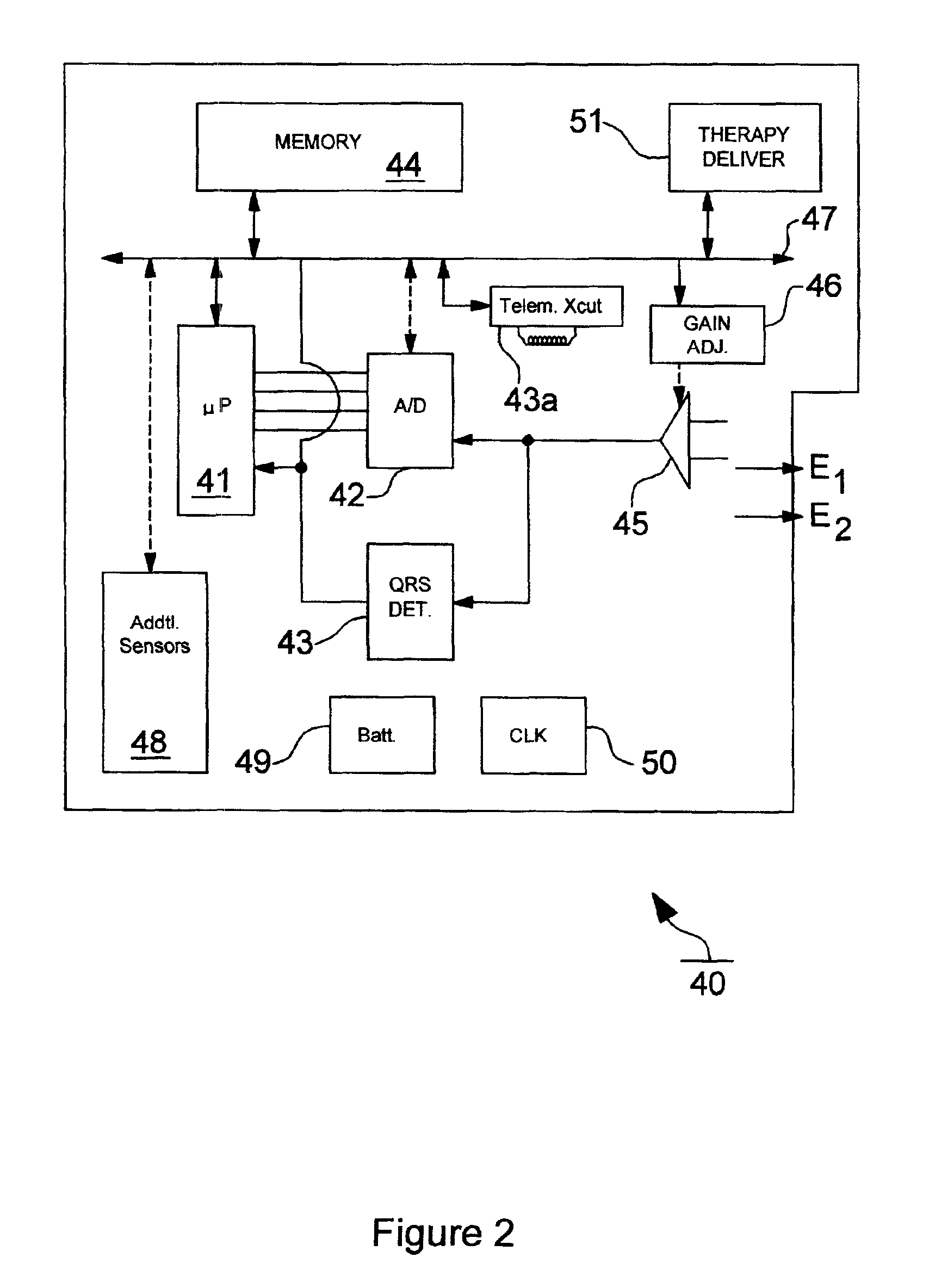Method and apparatus for discrimination atrial fibrillation using ventricular rate detection
a technology of ventricular rate and detection method, which is applied in the field of atrial fibrillation detection, can solve the problems of reducing or disrupting cardiac output, too slow beating of the ventricle, and not providing sufficient cardiac outpu
- Summary
- Abstract
- Description
- Claims
- Application Information
AI Technical Summary
Problems solved by technology
Method used
Image
Examples
Embodiment Construction
[0040]FIG. 1 is a functional schematic diagram of an implantable medical device according to a preferred embodiment of the present invention. This diagram should be taken as exemplary of the type of device in which the invention may be embodied, and not as limiting, as it is believed that the invention may usefully be practiced in a wide variety of device implementations, including devices providing therapies for treating atrial arrhythmias instead of or in addition to ventricular arrhythmias, cardioverters and defibrillators which do not provide anti-tachycardia pacing therapies, anti-tachycardia pacers which do not provide cardioversion or defibrillation, and devices which deliver different forms of anti-arrhythmia therapies such as nerve stimulation or drug administration.
[0041]As illustrated in FIG. 1, an implantable medical device 30 according to the present invention includes an implantable device shell 31, with electrodes 32a and 32b transmitting a signal from the body of the...
PUM
 Login to View More
Login to View More Abstract
Description
Claims
Application Information
 Login to View More
Login to View More - R&D
- Intellectual Property
- Life Sciences
- Materials
- Tech Scout
- Unparalleled Data Quality
- Higher Quality Content
- 60% Fewer Hallucinations
Browse by: Latest US Patents, China's latest patents, Technical Efficacy Thesaurus, Application Domain, Technology Topic, Popular Technical Reports.
© 2025 PatSnap. All rights reserved.Legal|Privacy policy|Modern Slavery Act Transparency Statement|Sitemap|About US| Contact US: help@patsnap.com



